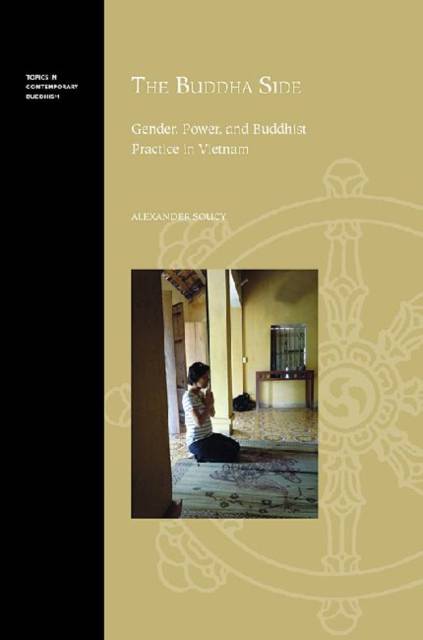
- Afhalen na 1 uur in een winkel met voorraad
- Gratis thuislevering in België vanaf € 30
- Ruim aanbod met 7 miljoen producten
- Afhalen na 1 uur in een winkel met voorraad
- Gratis thuislevering in België vanaf € 30
- Ruim aanbod met 7 miljoen producten
Zoeken
€ 74,95
+ 149 punten
Omschrijving
The most common description of the supernatural landscape in Vietnam makes a distinction between Buddhist and non-Buddhist "sides." The "Buddha side" (ben phat) is the focus of this investigation into the intersection of gender, power, and religious praxis. Employing an anthropological approach to Buddhist practice that takes into account modes of action that are not only socially constructed and contextual, but also negotiated by the actors, The Buddha Side uniquely explores how gender and age affect understandings of what it means to be a Buddhist.
In seeking to map out the ways and meanings of Buddhist engagement, Alexander Soucy examines everything from the skeptical statements of young men and devotional performances of young women to the pilgrimages of older women and performances of orthodoxy used by older men to assert their position within the pagoda space. Soucy draws on more than four years' experience conducting ethnographic research in Hanoi to investigate how religious practice is grounded in the constitution and marking of social identity. From this in-depth view, he describes the critical role of religion in shaping social contexts and inserting selves into them. Religion can thus be described as a form of theatre--one in which social identities (youth, old age, masculinity, femininity, authority) are constructed and displayed via religious practice. A compelling look at the performative aspect of Buddhism in contemporary Vietnam, The Buddha Side will be welcomed by anyone with an interest in Buddhism as it is practiced on the ground.Specificaties
Betrokkenen
- Auteur(s):
- Uitgeverij:
Inhoud
- Aantal bladzijden:
- 256
- Taal:
- Engels
- Reeks:
- Reeksnummer:
- nr. 14
Eigenschappen
- Productcode (EAN):
- 9780824835989
- Verschijningsdatum:
- 31/07/2012
- Uitvoering:
- Hardcover
- Formaat:
- Genaaid
- Afmetingen:
- 155 mm x 231 mm
- Gewicht:
- 703 g

Alleen bij Standaard Boekhandel
+ 149 punten op je klantenkaart van Standaard Boekhandel
Beoordelingen
We publiceren alleen reviews die voldoen aan de voorwaarden voor reviews. Bekijk onze voorwaarden voor reviews.











